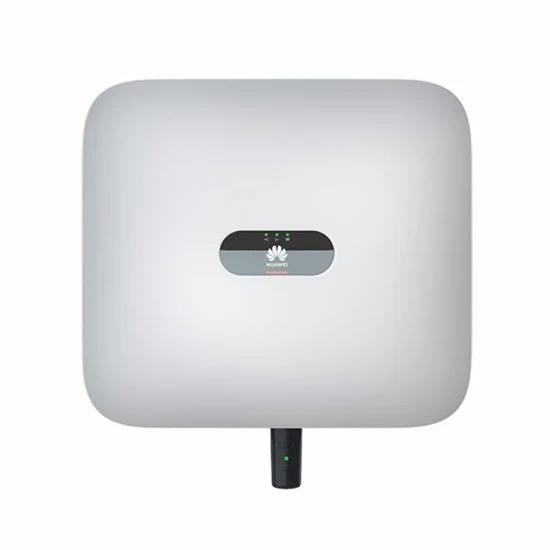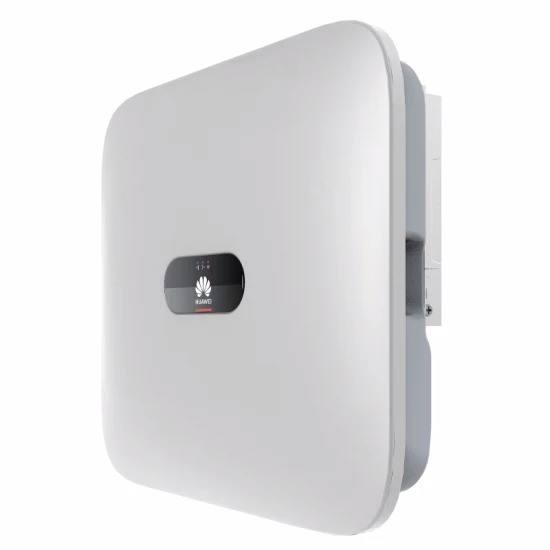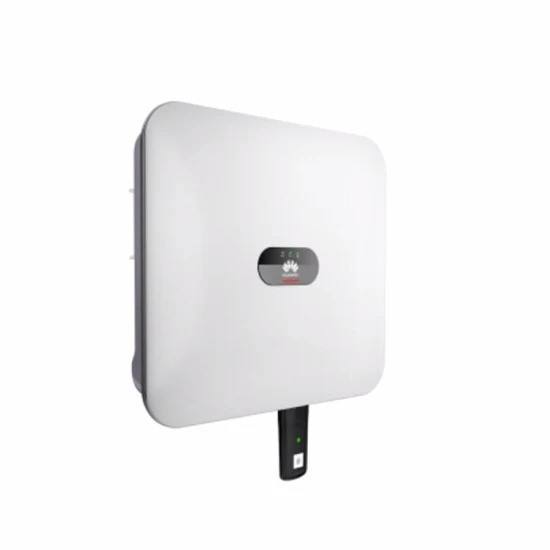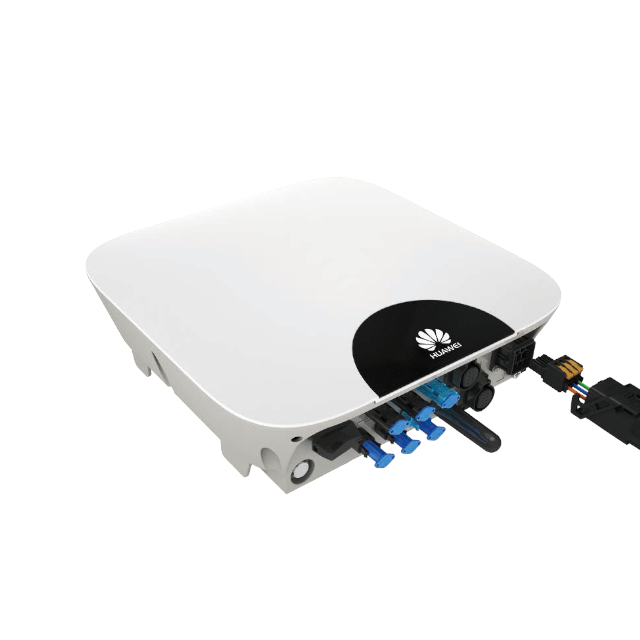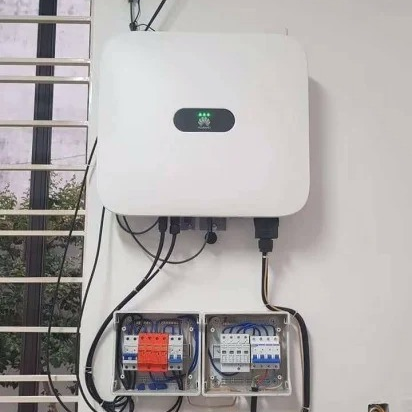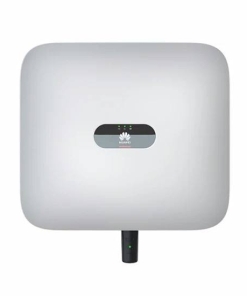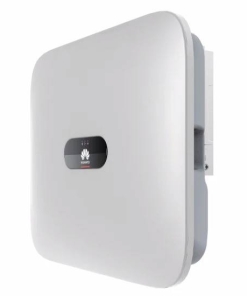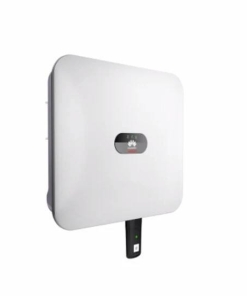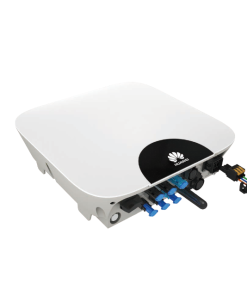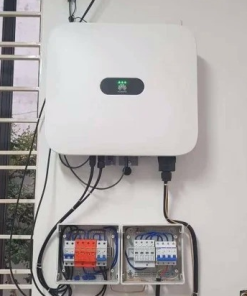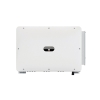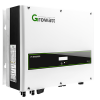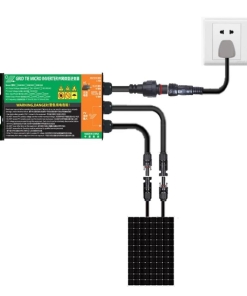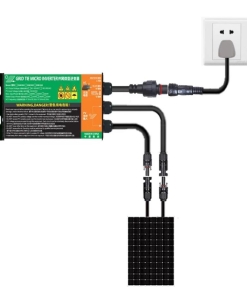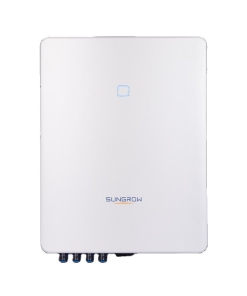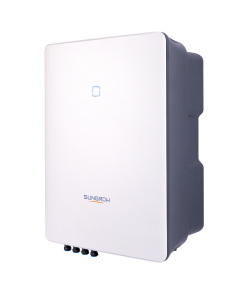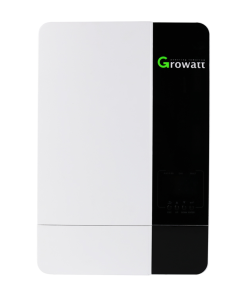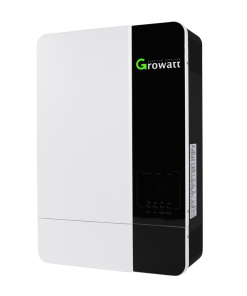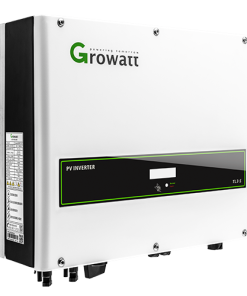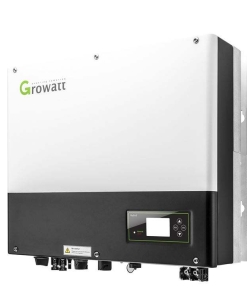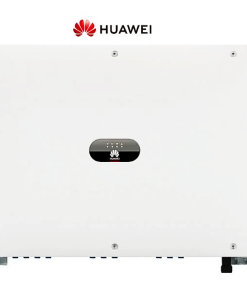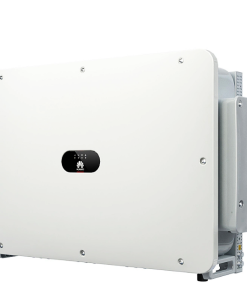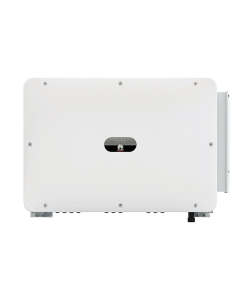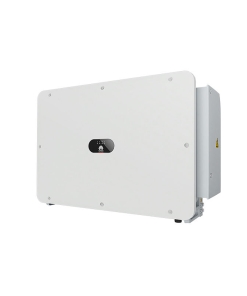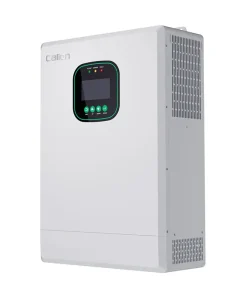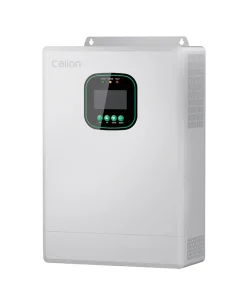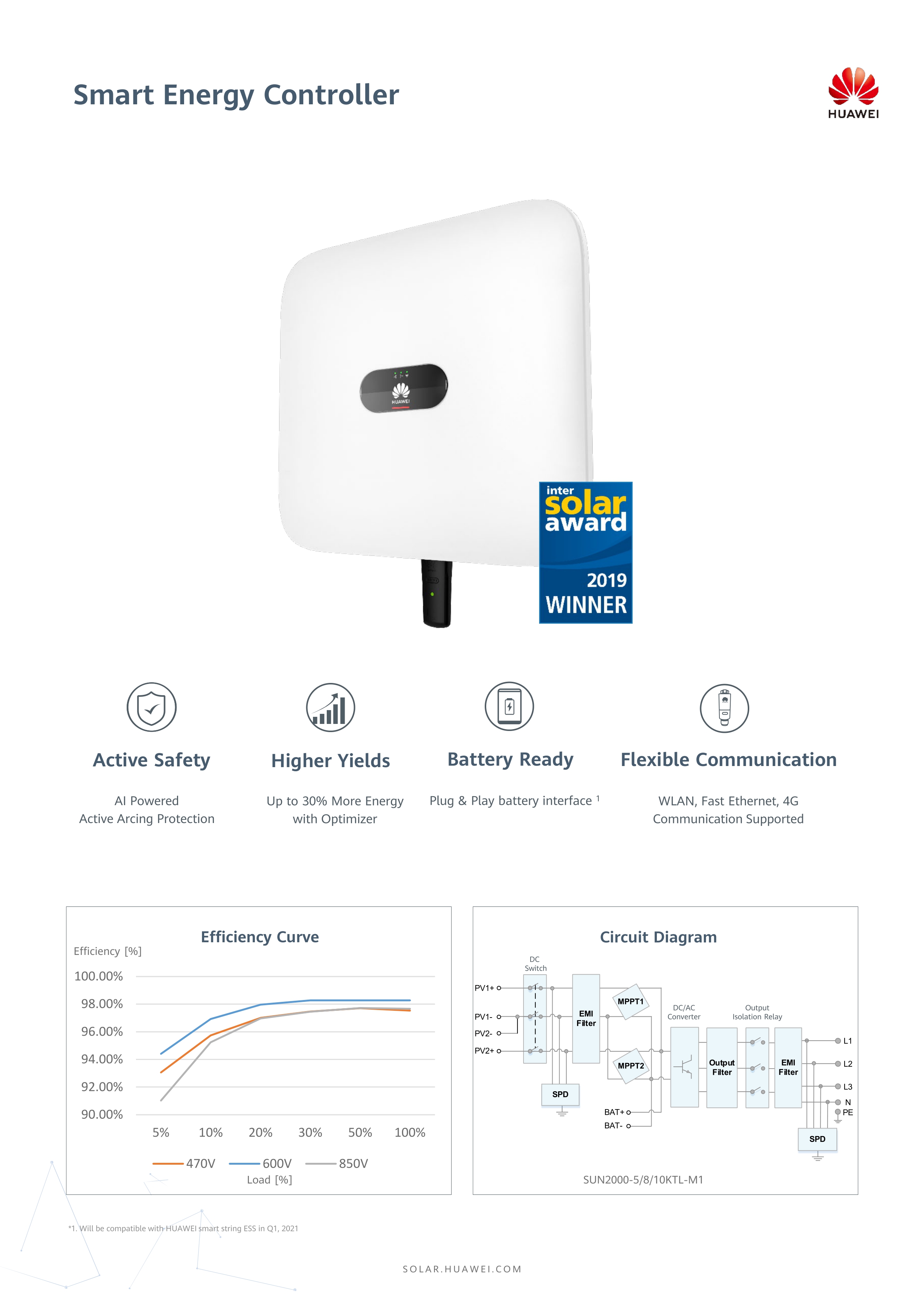
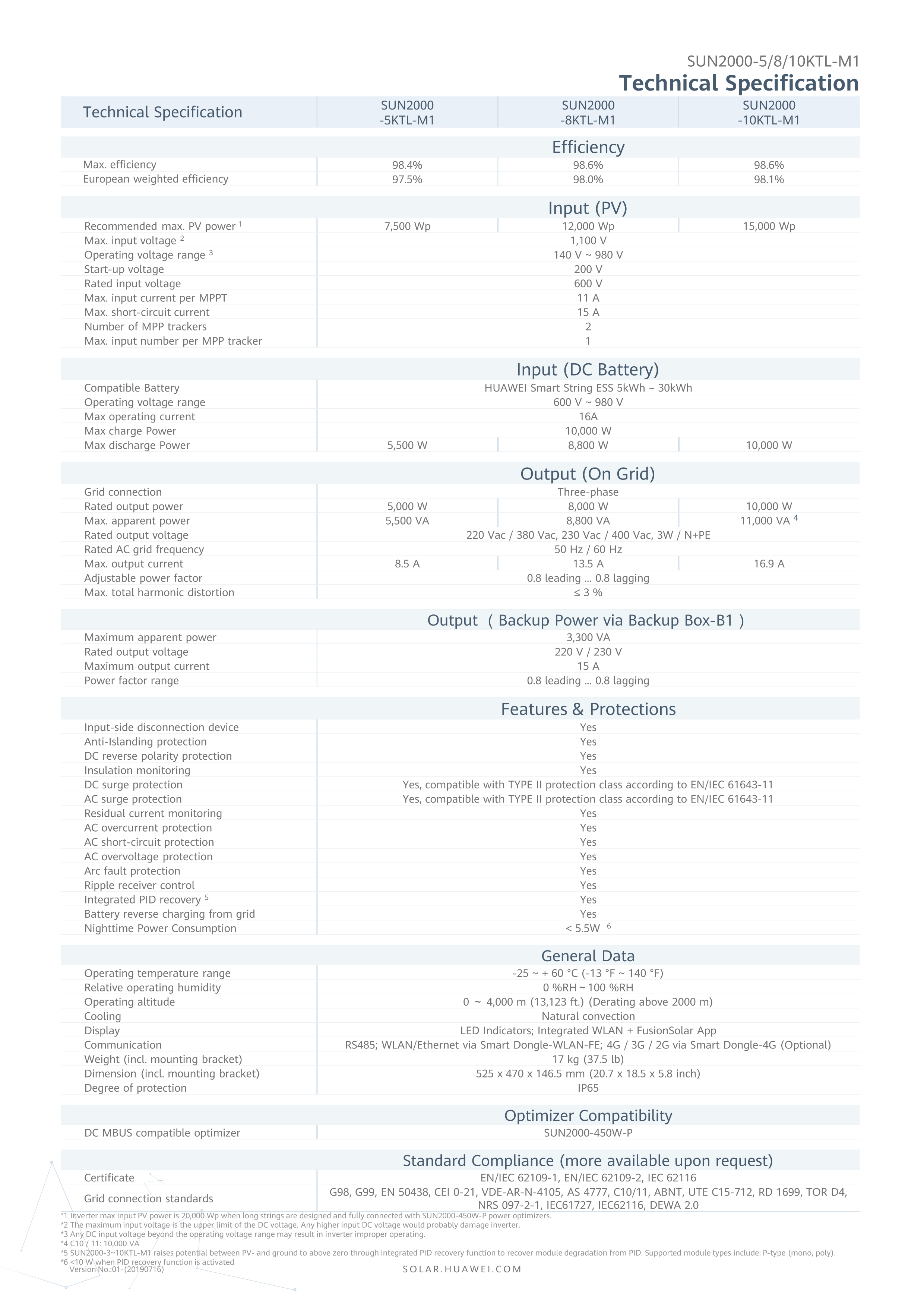
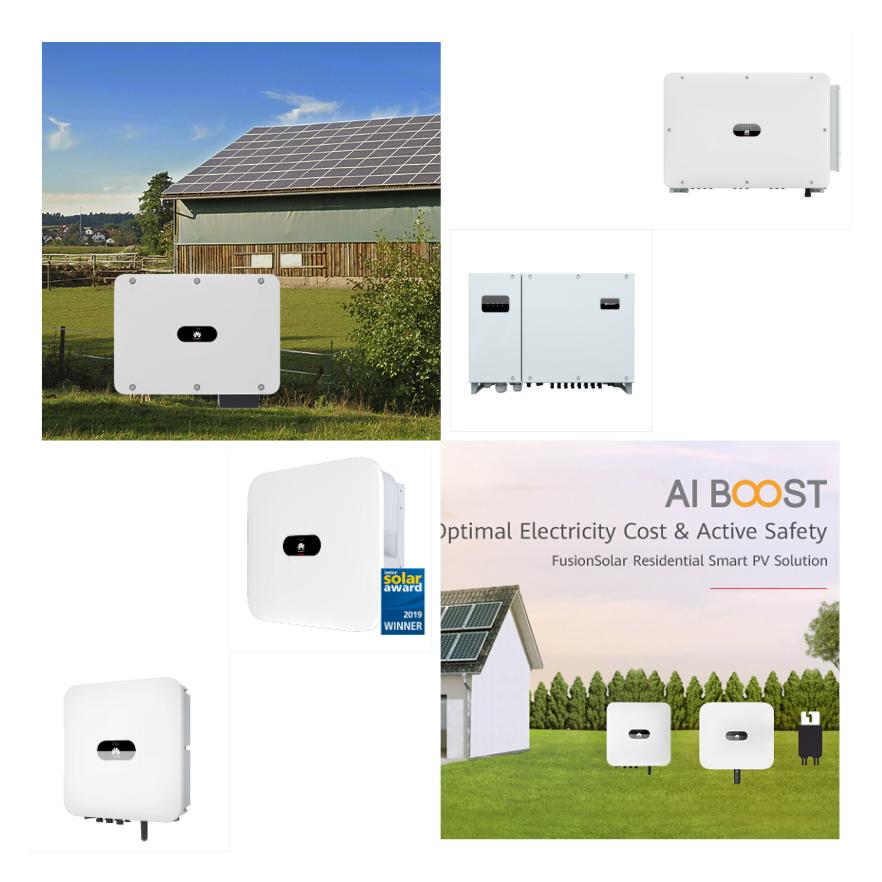
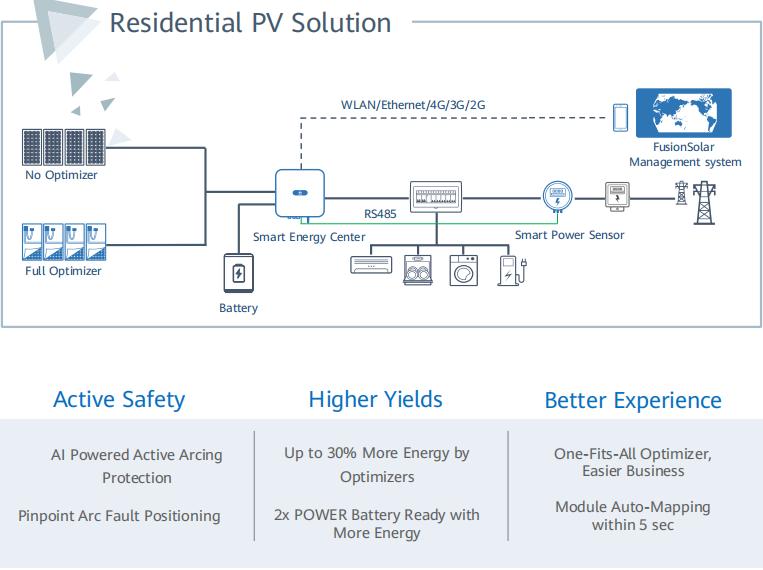
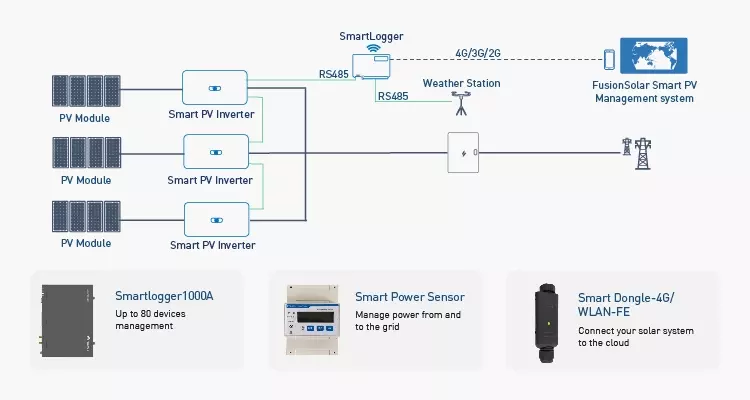
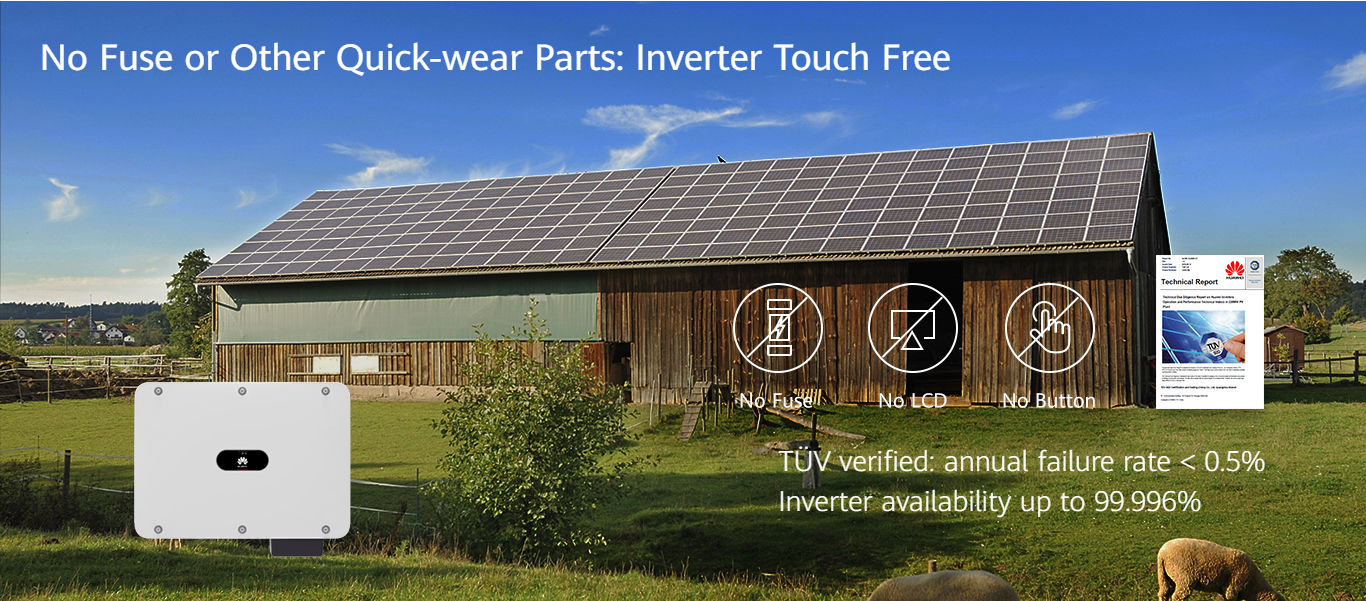
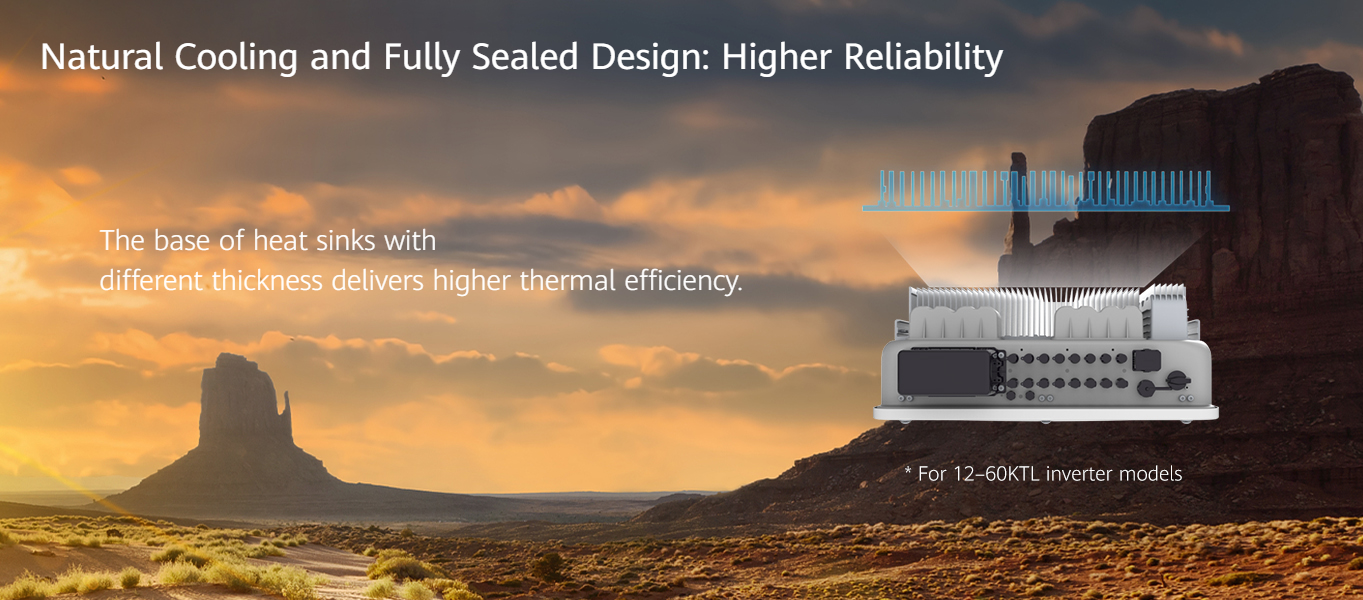
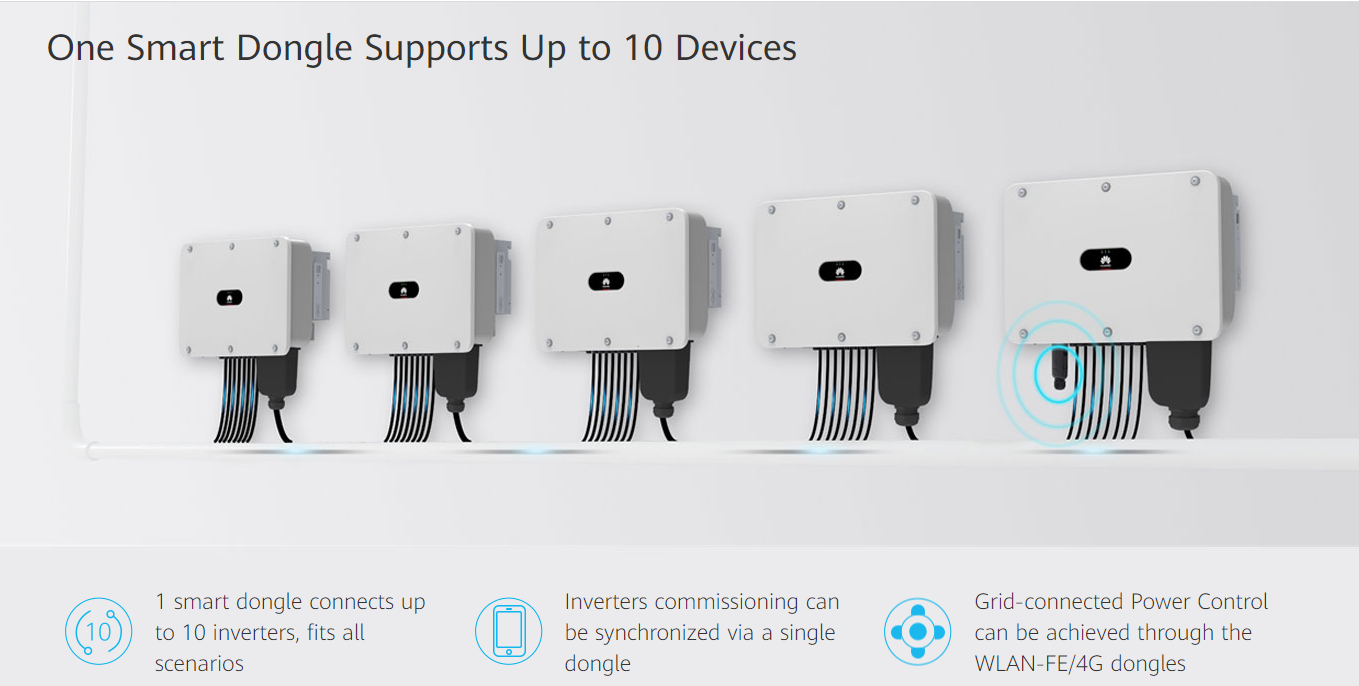
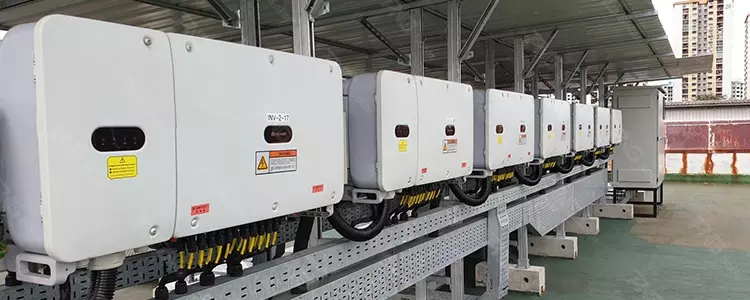
Huawei SUN2000-5/8/10KTL-M1 Solar Inverter Specification
|
Technical parameters
|
SUN2000-5KTL-M1
|
SUN2000-6KTL-M1
|
SUN2000-8KTL-M1
|
SUN2000-10KTL-M1
|
SUN2000-12KTL-M1
|
|
Efficiency
|
|||||
|
Maximum efficiency
|
98.4%
|
98.6%
|
98.60%
|
98.6%
|
98.6%
|
|
The input
|
|||||
|
Recommended max. PV power 1
|
7500wp
|
9000wp
|
12000wp
|
15000wp
|
18000wp
|
|
Max. input voltage 2
|
1100V
|
||||
|
Start voltage
|
200v
|
||||
|
Max. input current per MPPT
|
11A
|
||||
|
Maximum short circuit current
|
15A
|
||||
|
Operating voltage range 3
|
140V~980V
|
||||
|
Rated input voltage
|
600V
|
||||
|
Maximum input number
|
2
|
||||
|
Max. input number per MPP tracker
|
2
|
||||
|
Input (DC Battery)
|
|||||
|
Compatible Battery
|
HUAWEI Smart String ESS 5kWh – 30kWh
|
||||
|
Operating voltage range
|
600 V ~ 980 V
|
||||
|
Max operating current
|
16A
|
||||
|
Max charge Power
|
10,000 W
|
||||
|
Max discharge Power
|
5,500 W
|
6,600 W
|
8,800 W
|
10,000 W
|
10,000 W
|
|
The output
|
|||||
|
Grid connection
|
Three-phase
|
||||
|
Rated output
|
5,000W
|
6,000W
|
8,000W
|
10,000W
|
12,000W
|
|
Maximum apparent power
|
5,500VA
|
6,600VA
|
8,800VA
|
11,000VA
|
12,000VA
|
|
Maximum active power
|
5,000W
|
6,000W
|
8,000W
|
10,000W
|
12,000W
|
|
Rated output voltage
|
220Vac/380Vac,230vAC/400Vac,3W/N+PE
|
||||
|
Output voltage frequency
|
50HZ/60HZ
|
||||
|
Maximum output current
|
8.5A
|
10.1A
|
13.5A
|
16.9A
|
18.4A
|
|
Max. total harmonic distortion
|
<3%
|
||||
|
Output (Backup Power via Backup Box-B1)
|
|||||
|
Maximum apparent power
|
3,300 VA
|
||||
|
Rated output voltage
|
220 V / 230 V
|
||||
|
Maximum output current
|
15 A
|
||||
|
Power factor range
|
0.8 leading ... 0.8 lagging
|
||||
|
Features & Protections
|
|||||
|
Input-side disconnection device
|
Yes
|
||||
|
Anti-Islanding protection
|
Yes
|
||||
|
DC reverse polarity protection
|
Yes
|
||||
|
Insulation monitoring
|
Yes
|
||||
|
DC surge protection
|
Yes, compatible with TYPE II protection class according to EN/IEC 61643-11
|
||||
|
AC surge protection
|
Yes, compatible with TYPE II protection class according to EN/IEC 61643-11
|
||||
|
Residual current monitoring
|
Yes
|
||||
|
AC overcurrent protection
|
Yes
|
||||
|
AC short-circuit protection
|
Yes
|
||||
|
AC overvoltage protection
|
Yes
|
||||
|
Arc fault protection
|
Yes
|
||||
|
Ripple receiver control
|
Yes
|
||||
|
Integrated PID recovery
|
Yes
|
||||
|
Battery reverse charging from grid
|
Yes
|
||||
|
Nighttime Power Consumption
|
Yes
|
||||
Products Description
Huawei took the lead in integrating the digital information technology accumulated over more than 30 years with photovoltaic cross-border, and launched the leading smart photovoltaic solution.
On the power generation side, new ICT technologies such as AI and cloud are further integrated with photovoltaics to create smart photovoltaic power plants with “efficient power generation, smart operation and maintenance, safe and reliable, and grid-friendly”, helping photovoltaics become the main energy source. On the power consumption side, based on the concept of “active safety and better cost per kilowatt-hour”, Huawei has launched green power solutions for enterprises and home users to increase the rate of spontaneous self-utilization. It is the first to realize 24-hour clean power in household scenarios, leading users Enter a new era of electricity.
Advantages of solar inverters
The solar inverter is an important component in a solar energy system, converting the direct current (DC) produced by solar panels into alternating current (AC) that can be used by household appliances or sold back to the grid. One major advantage of solar inverters is their ability to boost the efficiency of solar panels. By converting DC to AC, solar inverters can optimize the power output of solar panels and reduce the amount of energy lost during the conversion process. Another advantage of solar inverters is their versatility. They can be installed in a variety of residential and commercial settings, and can adapt to meet the needs of different applications.
Additionally, solar inverters are low maintenance and can operate for many years with minimal servicing. They also provide a convenient way to monitor the performance of a solar energy system, allowing users to track energy production, system status, and potential faults.
Finally, solar inverters are environmentally friendly, producing zero emissions and reducing reliance on fossil fuels. In conclusion, solar inverters offer many advantages for those considering the switch to solar energy, including efficiency, versatility, low maintenance, and sustainability.
